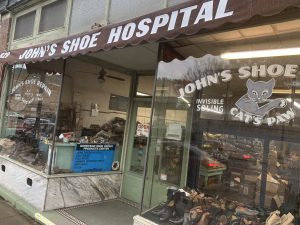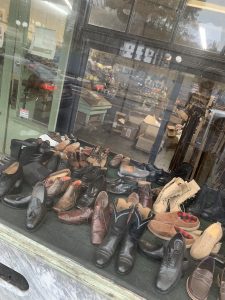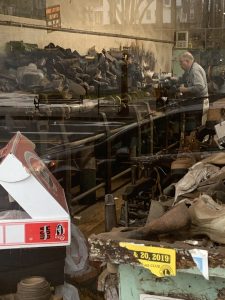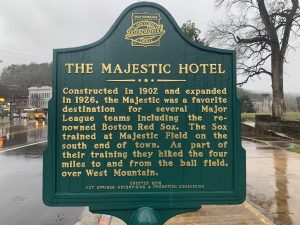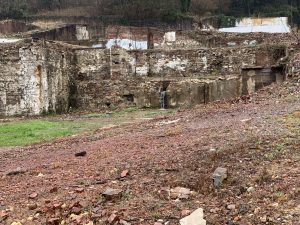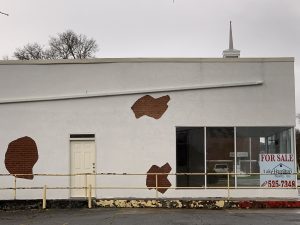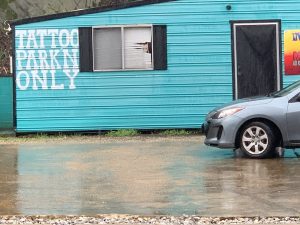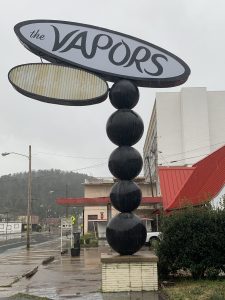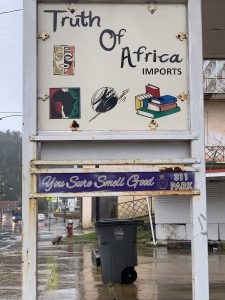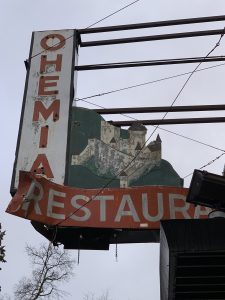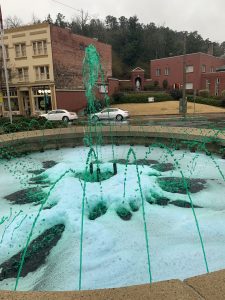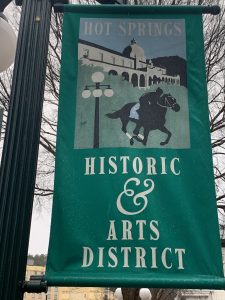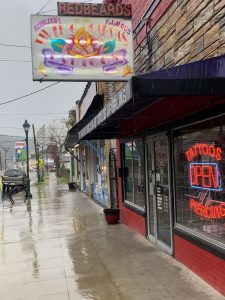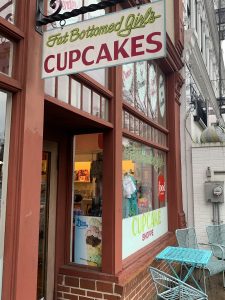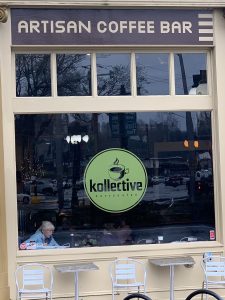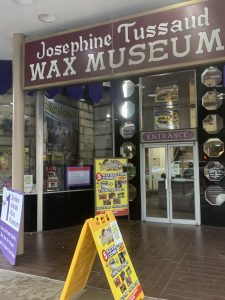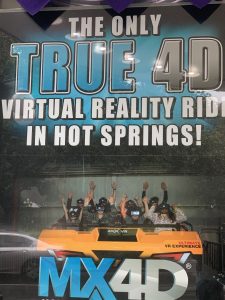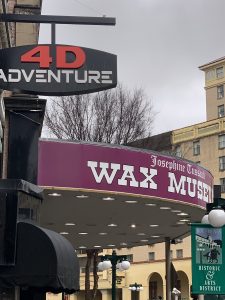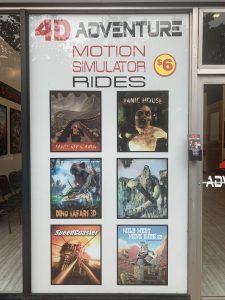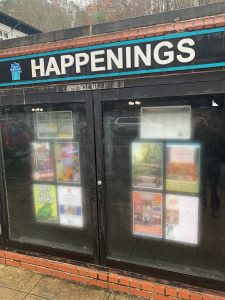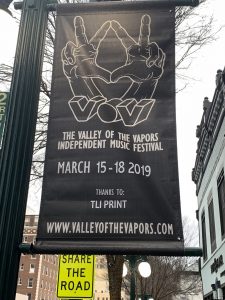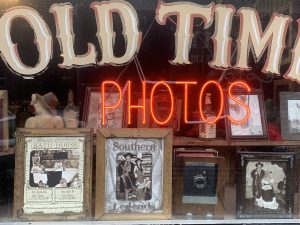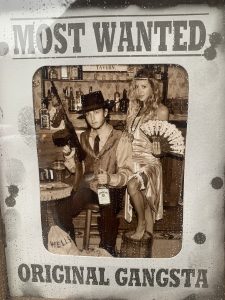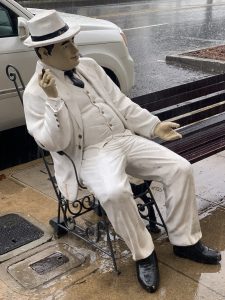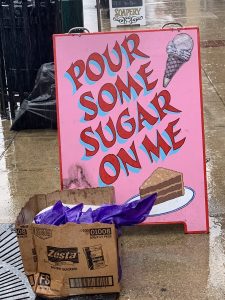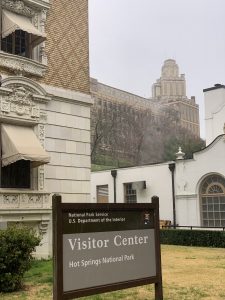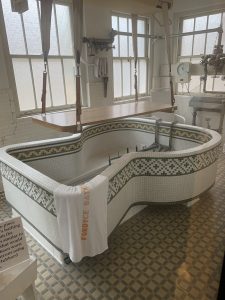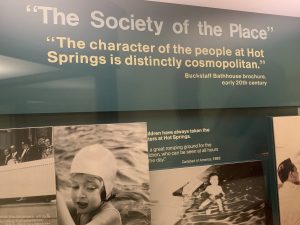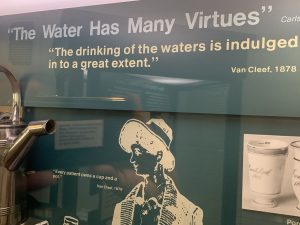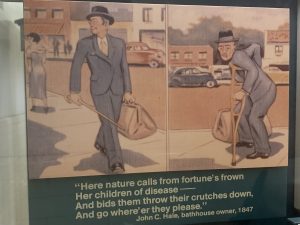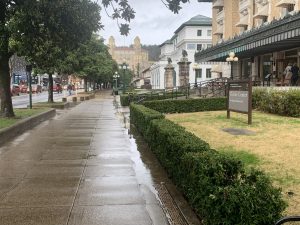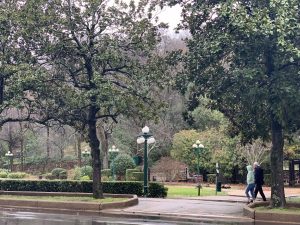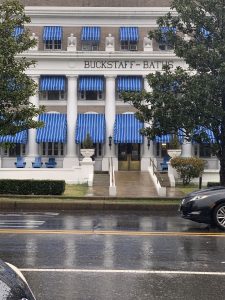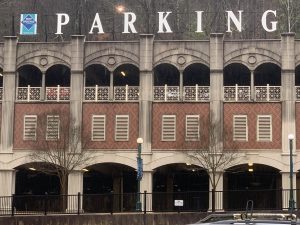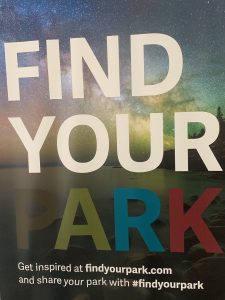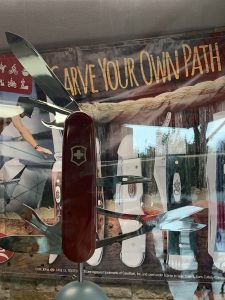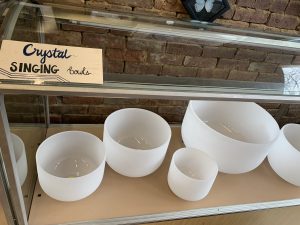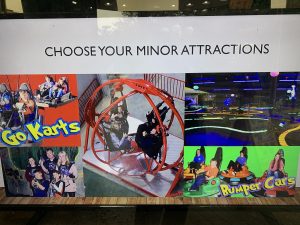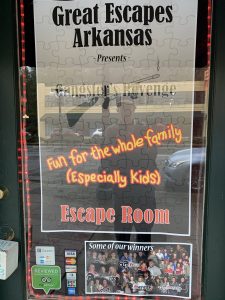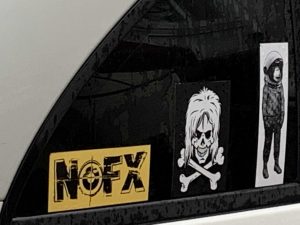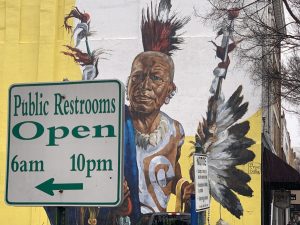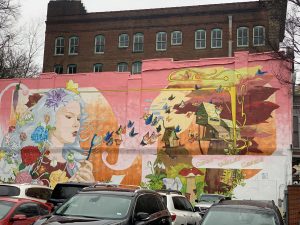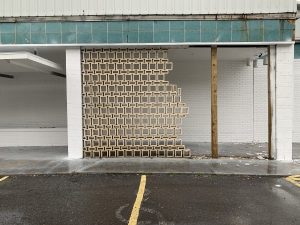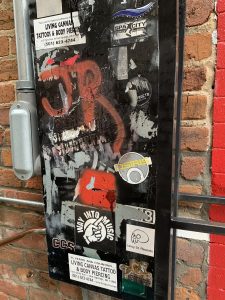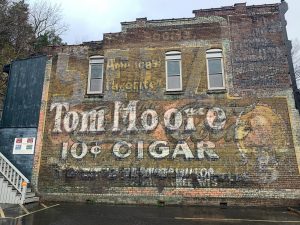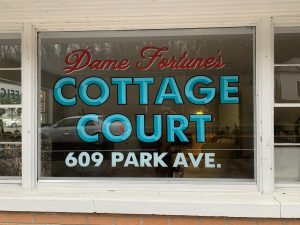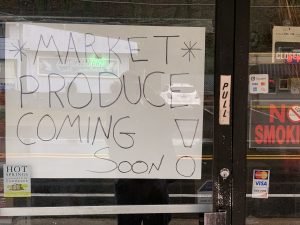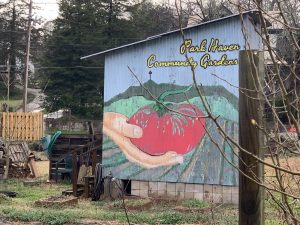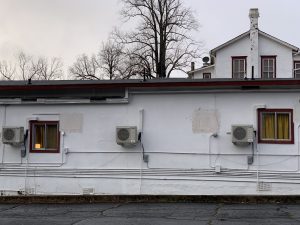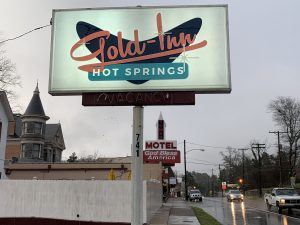Hot Springs [March 13, 2019] — See Pix further below
Pick a stopover between Atlanta and the Texas / New Mexico border. Try to get some vibe, some guerrilla sense in passing, some reflection of what is happening in some other America. Hot Springs Arkansas was our first-stop choice.
Down-and-out rural America here meets retro leisure re-takes and uptakes from the 1950s, 60s, and 70s. These riff off and from and also against the famed weird U.S. National Park here right on the city’s main city street, its enormous used-to-be opulent bath houses in tile and marble and Grecian statues now almost a century old, back when spas meant the hope of some pain relief, or getting a charge to see a lady’s ankle, bathhouses when sex at all seemed barely legal.
We stopped, coming into town on this pouring rain mid-March Wednesday. Aside the crumbling old houses, some boarded up, and the out-of-business strip malls, was what seemed to be a thriving antiquated business: John’s Shoe Hospital, just before Central Avenue, the main drag. John died, but his longtime worker and friend, now himself in his 60s, took over. He toils with dedicated purpose amid the mountains of shoes, mostly very old, piled in huge heaps all around him. He works completely alone in the cavernous place, amid the loud constant noise of the buffing machine. He is friendly but not wanting to stop work, and, anyway, there’s no real counter across which he could talk with a visitor. Business is OK, he says over the din, but you have to keep at it. Here is the American work ethic that will keep you from the grave, drive you into it, or both.
Other than near John’s shop, there’s practically no one on the street, as if all the stores have gone either out of business or underground. Until you get downtown.
We are staying in Gold-Inn Hotsprings, a retro-refitted old row of motel semi-cottages. Justin and his gay husband Baker met at hotel management school and came from Houston as consultants for the previous owner. When they found the place on sale for a low price, they saw a Gold-Inn opportunity and decided to buy it. Today is opening day of their first full season with several new renovated units. He is optimistic and happy and willing to talk even though busy, mixing friendliness with efficiency and business acumen. He says people in Hot Springs have been very welcoming to him and his partner, and that it’s actually a very cool place to live.
The town is funky beyond belief – a riot of fun and self-conscious contradiction. The new 4D virtual reality thrill theater abuts the newly-refurbed wax museum. The gangster town history shop now tunes to gantsa rap and criminal photo shoots for the entire family. The consumer target seems middle-to-lower-middle class, a regional go-to spot, re-visiting with tongue-in-cheek parody the spectacularism of American family vacations from the 1950s to 70s. The vibe is tame and fringy, a light-hearted mid-American playful kitsch, with Vapor shops and tattoo parlors and large crystal singing bowls and Baptist consignment shops and gothic music festivals. This all on the plebian side of the street, literally, across from the row of all-white ancient baths of the used-to-be rich and famous, framed by lush and steep hill-mountains. Though it’s pouring now, Justin stays there’s great beauty on the national park drives and trails that flank both sides of the town. He says that between the crowds coming for Oaklawn horseracing and the summer season, many accommodations fill up regularly. But I also see plenty of crumbled old motels and cottages, beyond new ownership and beyond repair. Our own deluxe place on hotels.com costs $89.59 for the night. Its rooms are done up with fine old touches – an antique vintage if non-working oven in the tiny kitchen, silk curtains with tassels in the high-ceiling dinette ante-room, a toasty faux-old gas fireplace, and easy outlets for all your devices on both side of the plush bed. But there is only one bar of signal strength, and he satellite internet comes and goes with the weather. Today it is off; the post of this blog will be delayed.
Walking through the rain into town reminds me that postmodern fact as opposed to theory is a riot of contradictions, each with its own wonder and pride and surprise and darker pathos. Hot Springs is a regional hasbeen that is also now a newly bubbling wannabe regional tourist destination center. It’s the kind of place that teeters between Trump and anti-Trump, in which the goal is probably to forget politics and make them matter less rather than more. People are friendly, rednecks and slightly more well-heeled alike. Even if partly unrealistic, there is hope against the down-and-out. This amid and despite the haggard young man gazing out vacantly on the porch of his used-to-be vintage house that now, like him, can barely stand up. But amid class schisms and generational shifts, there is nonetheless, in their very contradictions, a sense of forward movement, even of art and artistry, a wrench of brewing opposites in a somehow very American way, squeezing together the hasbeen and the wannabe, the irreparably lost and the hopefully found, the nostalgic past and the retro future, an America that is self-consciously gone but also playfully not forgotten.
Click Here to see 7-sec Hot Springs – Baily’s Ice Cream video
= = = = = =
CODA to Hot Springs [March 14]
Driving out Scenic Highway #7 back to I-40 is a continuing eyeful of rural America. Stores and local businesses are mostly boarded up, an artwork mosaic of decay and ruin, with many houses not far behind. The main exception is the Churches, so many of them in good and new repair – and most of them pretty new. As also elsewhere on state routes, a few newer commerce centers dot the landscape, mostly at the 4-way-stop juncture of major roads: a dollar store, convenience store, local chain grocery, liquor store, and gas station, sometimes one inside another. These don’t compete with the older family and mom and pop establishments and locally run services, which have been mostly just been wiped out, leaving their ruins a blighted vestige on the landscape. Viewed close, this decay has its own beauty, the artistry of crumbling. But it is not felt so in lived human terms.
How big a contrast with our bigger and more successful cities, like Atlanta. There except for ghetto areas, like life the drug-infested Bluffs or sex-trafficked Fulton industrial, land is so dear that the detritus of things past is quickly swept away: the maw of the modern gobbles up those broke Big City business, those hasbeen houses, razing their imprint and replacing them with the new and hopefully better, if the past never existed. But of course it does.
Is urban turnover and loss any less than here where the wreck of the past stays so much more visibly on the landscape? Probably yes, in the sense that at least there arises some new icon or image of urban betterment and hope. Except for the city burgeoning city homesless and the underclass; for them, images and icons of progress throw into deeper relief their own reality of being left behind, of struggling to find hope.
